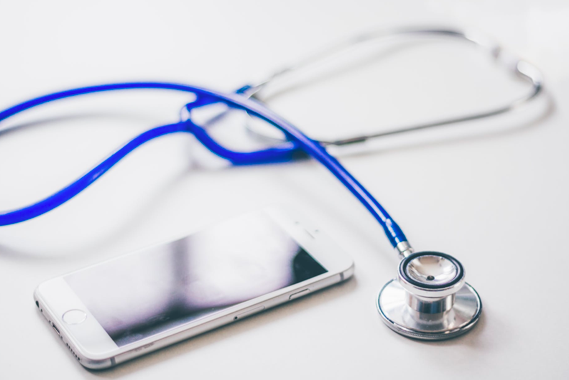[ad_1]
At first glance, the marriage of healthcare and mobile apps may seem a strange one. Many older people have a fairly rarefied view of medical appointments and would never imagine incorporating their smartphones into the management of their personal health. But as access to — and acceptance of — digital solutions has become more commonplace the healthcare market has seen the beginnings of enormous disruptions to the status quo. According to a 2017 report from the IQVIA Institute for Human Data Science, there are currently more than 318,000 mobile health — or mHealth — apps available worldwide, with more added each day.

MHealth apps can take many forms, and even the most novice app user has almost certainly encountered at least one. Ranging in focus from nutrition and fitness to mental and medical health, the field is a broad one. Some of the more recognizable fitness apps include Youtube star Cassey Ho’s Blogilates, or Under Armour’s MyFitnessPal app, which helps track a user’s diet and count calories, but more and more developers are starting to see the opportunities that come along with creating apps geared towards medical health. Recent research by Accenture shows that 75% of surveyed consumers consider technology important to managing their health, and the number of people who use mHealth apps and accompanying wearable technology has more than doubled since 2014, from 16% to 48%.

The fact is that as consumers become more tech-literate on average, demand for mHealth apps will continue to increase. The “anytime, anywhere” factor of having tools to manage your health in your pocket is a major factor driving that demand, and Medical Economics reports that even as far back as 2010, 79% of survey respondents would be more likely to select a healthcare provider who allows them to conduct healthcare interactions either online or on a mobile device. And if all that doesn’t convince you that it’s an exciting time to be in the mHealth app market, then consider this: Research and Markets projected the 2018 value of the mHealth market to be US$28.320 billion and expects it to climb to US$102.35 billion within five years.
Of course, there’s always a catch.
Earlier, when we stated that there are more mHealth apps available each day, we meant it: some estimates hold that there are two hundred mHealth apps being added to the market each day. If you are aiming to enter the growing mHealth arena, it’s vital to enter with your best foot forward, and that means that you will want to get your mobile app professionally developed as soon as possible.
Going with an innovative, experienced app developer will help your app establish itself. Smaller mobile app developers, such as the highly regarded Guaraná Technologies, will provide the insight and know-how you’ll need to take your concept to market, and you’ll have the added advantage of not being lost in the shuffle of a larger app farm. While the market may be ripe for new entries, those entries will need to be as strong as possible before they are introduced, so don’t hesitate to get the professional insight that will make the difference.
Human health is a big field, and the opportunities to connect patients and mHealth apps are endless. The market is growing, and that growth shows absolutely no sign of slowing down anytime soon. From individual states launching their own mHealth app for state residents to apps and technology aimed at ever more specific medical purposes, there is plenty of yet-undiscovered territory, and now is the time to make it yours.
[ad_2]
Source link
Leave a Reply